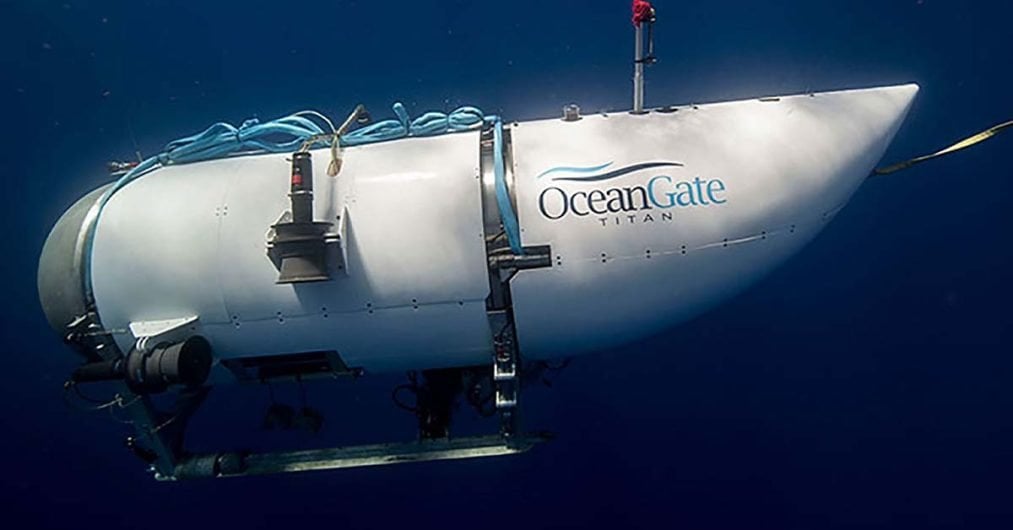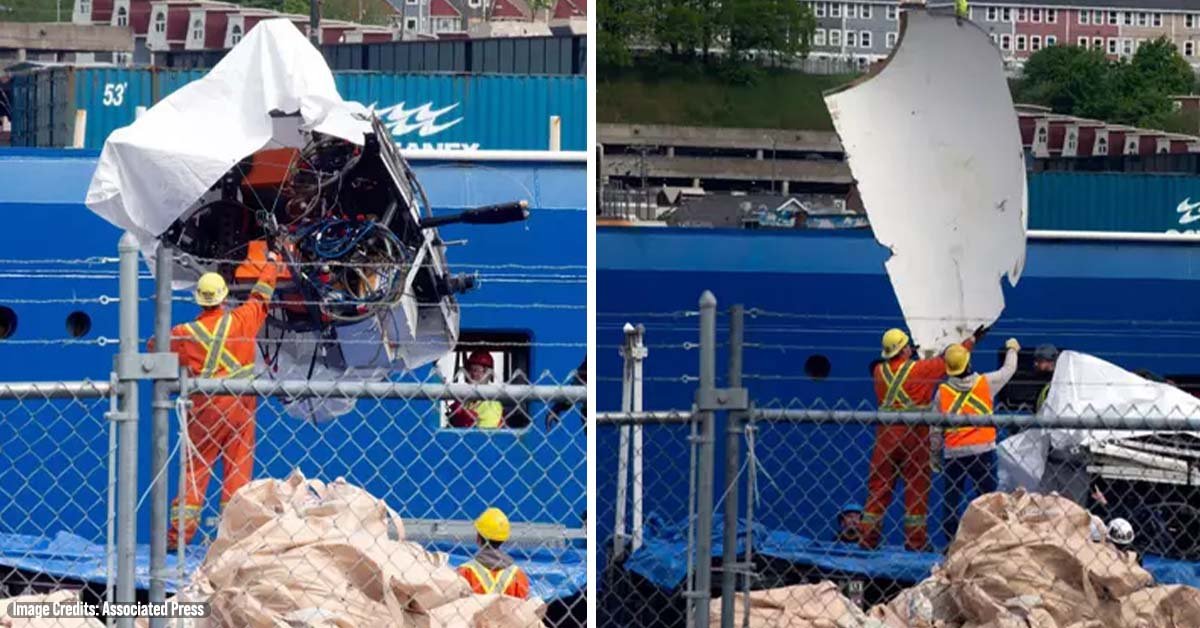The remains of the imploded Titanic-bound submersible were seen for the first time since the horrible tragedy that killed all the five men on board.
The missing Titan submersible suffered a catastrophic implosion killing all five men on board; US Coast Guard confirmed last week on Thursday, June 22.
It was reported that the Titanic-bound submersible that went missing on Sunday with a crew of five men on board suffered a ‘catastrophic implosion,’ shattering pieces of the unfortunate vessel and killing everyone on board.
The US Coast Guard confirmed that a debris field on the ocean floor had been discovered in the search operation for the missing Titan submersible.
Now, the wreckage of the doomed vessel has been found by a US Coast Guard ship Sycamore and Horizon Arctic from the depths of the Atlantic Ocean and has been unloaded at the Canadian Coast Guard pier in St John’s, Newfoundland.
“It is now set to be pieced together ‘like a jigsaw’ by British officials,” The Mirror reported.
Now, an international group of agencies is investigating the cause behind the implosion, and US maritime plans to issue a detailed report to improve the safety of submersibles worldwide.
“Once the Horizon Arctic had docked, the debris was quickly covered in large tarpaulins before being lifted by cranes onto waiting trucks,” per The Mirror.
“The pieces included a large, white section of curved metal appearing to show the outer casing of the 21-ft Titan submersible. Another piece showed cables, the vessel’s onboard computers, and other mechanical parts. A large circular part of the Titan, which appeared to be the dome-shaped front section, was also retrieved.”

The people on board were identified as Stockton Rush, the CEO of OceanGate Expeditions; British billionaire Hamish Harding; French dive expert Paul Henry Nargeolet; and prominent Pakistani businessman Shahzada Dawood and his son, Suleman.
The debris was considered as evidence that the missing sub shattered after suffering an implosion. Now experts have explained why and how the sub might have imploded and what would have happened to the five humans on board.
“To me, it makes absolute sense that the chamber, the pressure chamber where the passengers are sitting in, did not withstand the pressure because of the material that it was built on,” Ofer Ketter, a longtime submersible expert and co-founder of private sub company Sub-Merge, told The New York Post.

“And that is exactly what imploded and turned to dust. Everything else that was either made of titanium or perhaps other steels, survived, and that’s what was found,” he said.
“They never knew it happened,” Ofer said of the five passengers adding that it all happened within a millisecond, “which is actually very positive in this very negative situation.”
Since the beginning, the design of the vessel has been under discussion, which the CEO of OceanGate, Stockton Rush, claimed to be safe and innovative. However, many experts believe otherwise.
Rachel Lance, a biomedical engineer from Duke University, said that the carbon fiber hull used by the OceanGate submersible was ‘unsuitable.’
“This was a company that was already defying much of what we already know about submersible design,” Rachel Lance told CNN.
The expert added that the materials used in the vessel design were unsuitable and they ‘were already large red flags to people who have worked in this field.’
She said the materials used in the design of the Titan sub had safety risks as they tended to weaken under high-pressure conditions.
“This is not exactly what, in my opinion, would be innovation because this is already a thing that has been tried, and it simply didn’t work.”
Share Your Thoughts:
Let us know your thoughts in the comments.

